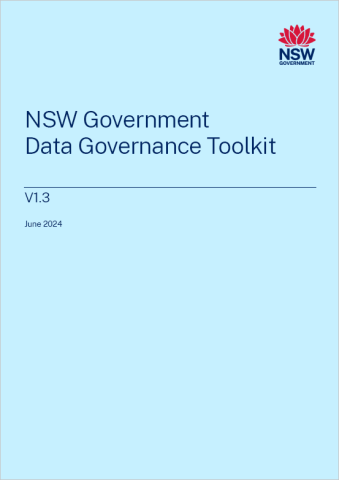Module 5: Organisational Structures
What is it?
One of the most important aspects of data governance is ensuring the right organisational structures are in place to ensure data-related priorities and initiatives are aligned across the agency. This alignment happens via organisational bodies, often referred to as data governance boards, councils, steering committees or working groups. These bodies are generally comprised of stakeholders from across different business functions who have the authority to make strategic and operational decisions. While these groups often have different functions and roles, an important component of this structure is having an overarching decision-making body that assumes accountability for the strategic direction of data governance in the agency.
Why is it important?
Without the right organisational structures in place, data flows in and out of different parts of the organisation, with nobody empowered to take responsibility for its entire journey through various systems, databases and processes. This leads to inefficient and contradictory data management practices, and results in poor quality and under-utilised data. A data governance structure, with clearly assigned decision-making authority, provides your agency with a mechanism to develop a consistent, systematic and efficient approach to maximising the value of data.
What good looks like
- Cross-enterprise: the organisational structure is clear and transparent includes stakeholders from across the various business areas of the organisation to support and govern enterprise-wide decision-making.
- Executive-representation: the organisational structure includes a senior executive body that has the capacity to implement enterprise-wide data governance initiatives.
- Targeted: working groups are engaged to address discreet data issues, such as data quality improvement, privacy and security.
- Contingent: the organisational structure is tailored to the agency’s specific needs, strategic priorities, size, resources and its current level of data maturity.
How to achieve good practice
- Ensure there is a cross-functional executive-level body that has strategic oversight of data governance decisions and activities across the organisation. Although developed for information governance, refer to the National Archives of Australia sample terms of reference for an information governance committee for direction on how to set up a data governance body.
- Ensure the data governance structure is compatible with your agency. There is no “right” way to organise a data governance structure. While some agencies establish formal data governance bodies, others may choose to integrate data governance responsibilities into existing governance groups. The important thing is that data governance decisions are made collaboratively among staff and across business areas.
- Establish working groups for driving discreet data projects. These bodies can also provide feedback to the executive-level governance body regarding the effectiveness of data governance initiatives within the business areas.
- Develop a visual representation of your organisational data governance structures that is accessible to all staff.
Questions to ask yourself
What are the specific data governance goals and objectives that the organisational structure aims to achieve? |
Who are the key stakeholders and decision-makers involved in data governance? What roles do they currently play in data-related activities? |
How will data governance responsibilities be distributed across different departments or teams within the organisation? |
What level of authority and decision-making power should the data governance bodies have? |
How will data governance responsibilities interact with existing governance structures and committees in the organisation? |
How will the data governance bodies be represented at the executive or leadership level? |
What are the required skill sets and expertise for individuals serving in data governance roles? |
What are the reporting lines for data governance bodies? To whom will they report, and how often? |
How will the data governance bodies collaborate with IT, legal, compliance, and other relevant departments? |
How will the data governance structure adapt to changes in the organisation's size, scope, or strategic priorities? |
What mechanisms will be in place to ensure data governance decisions are transparent and well-communicated to relevant stakeholders? |
How will conflicts and disputes related to data governance be resolved within the organisational structure? |
How will the data governance bodies stay informed about emerging technologies and industry best practices? |
How will data privacy and security considerations be integrated into the organisational structure for data governance? |
How will data governance be aligned with the organisation's overall culture and values? |
What training and development opportunities will be provided to personnel involved in data governance roles? |
How will the effectiveness and efficiency of the data governance structure be measured and evaluated? |
What mechanisms will be in place to ensure ongoing engagement and participation from stakeholders in data governance initiatives? |
How will the organisational structure promote a culture of data-driven decision-making and data literacy across the organisation? |
Important Information
Although setting up an organisational data governance structure may only take a few months, incorporating its recommendations into business-as-usual may take significantly longer. Agencies should commit to regular data maturity assessments to guide the work of the data governance body and ensure it is focusing on priority areas of improvement.
